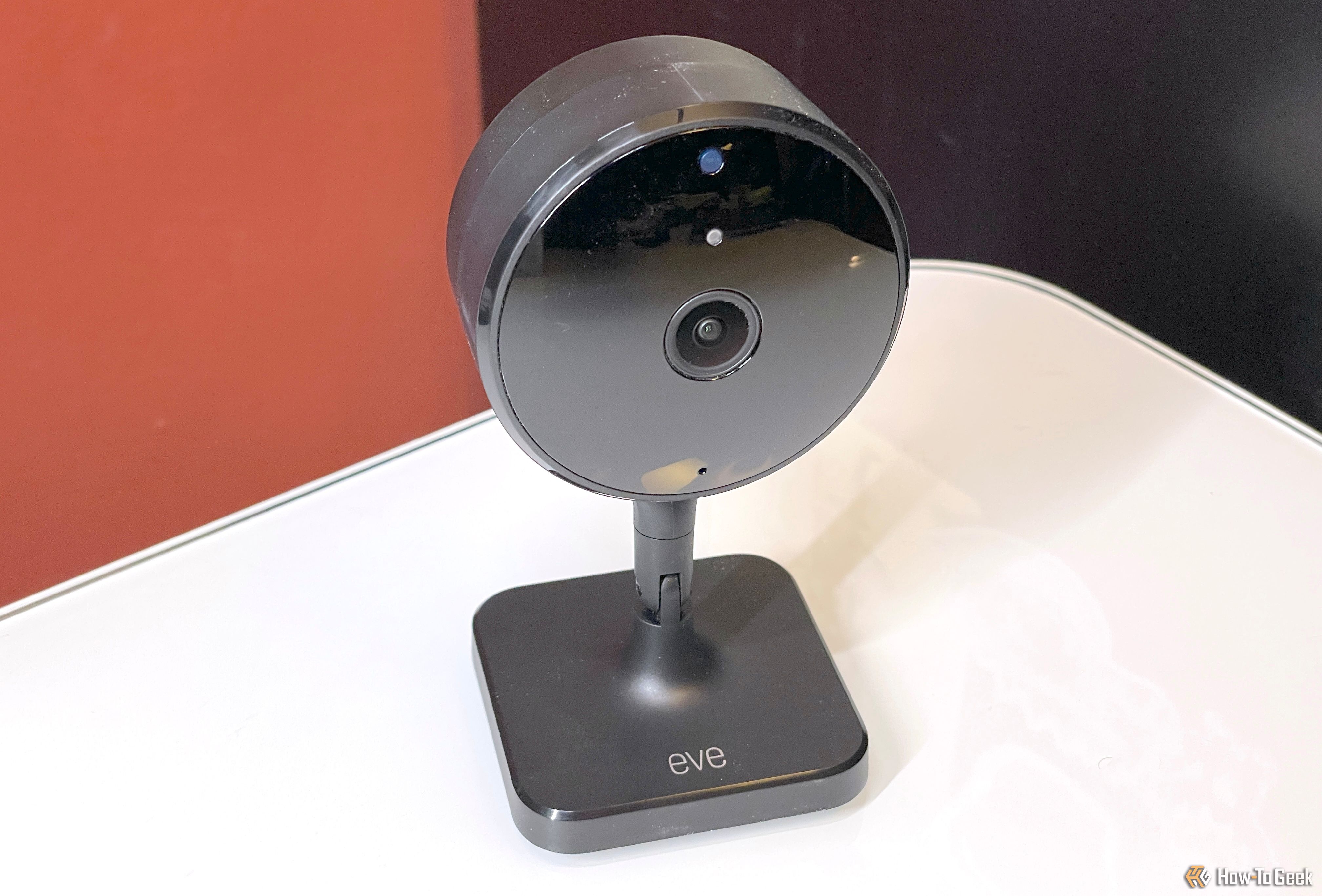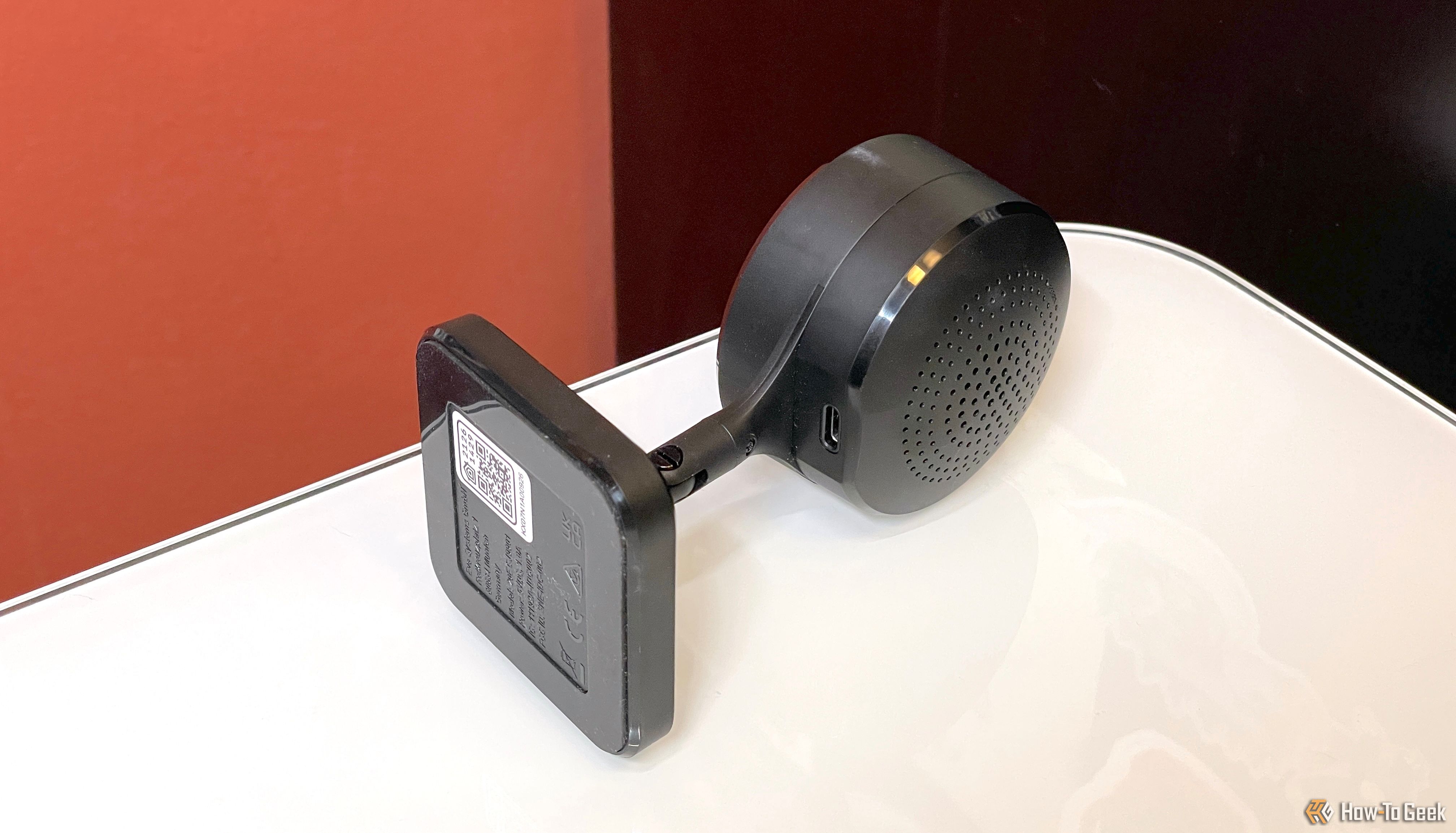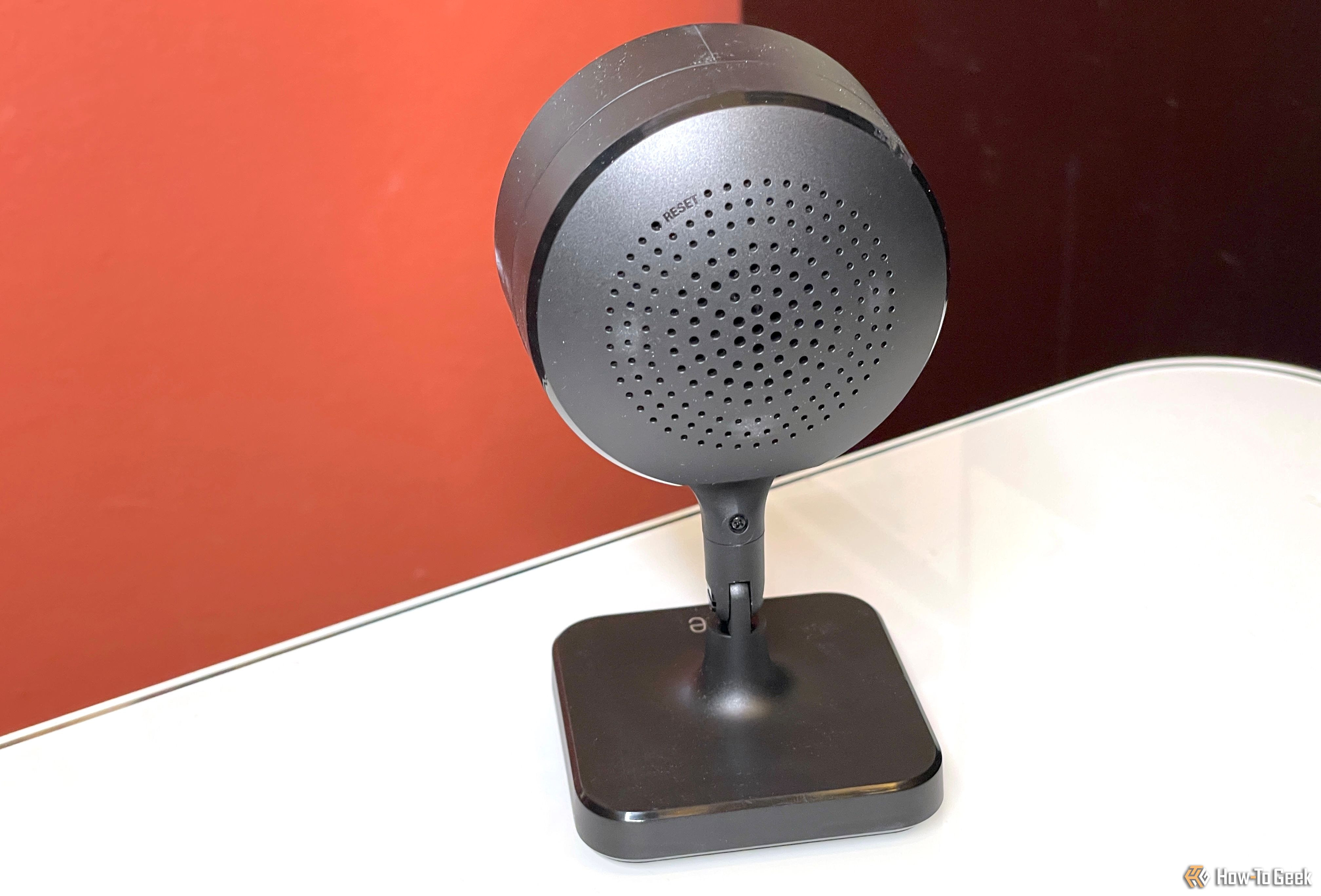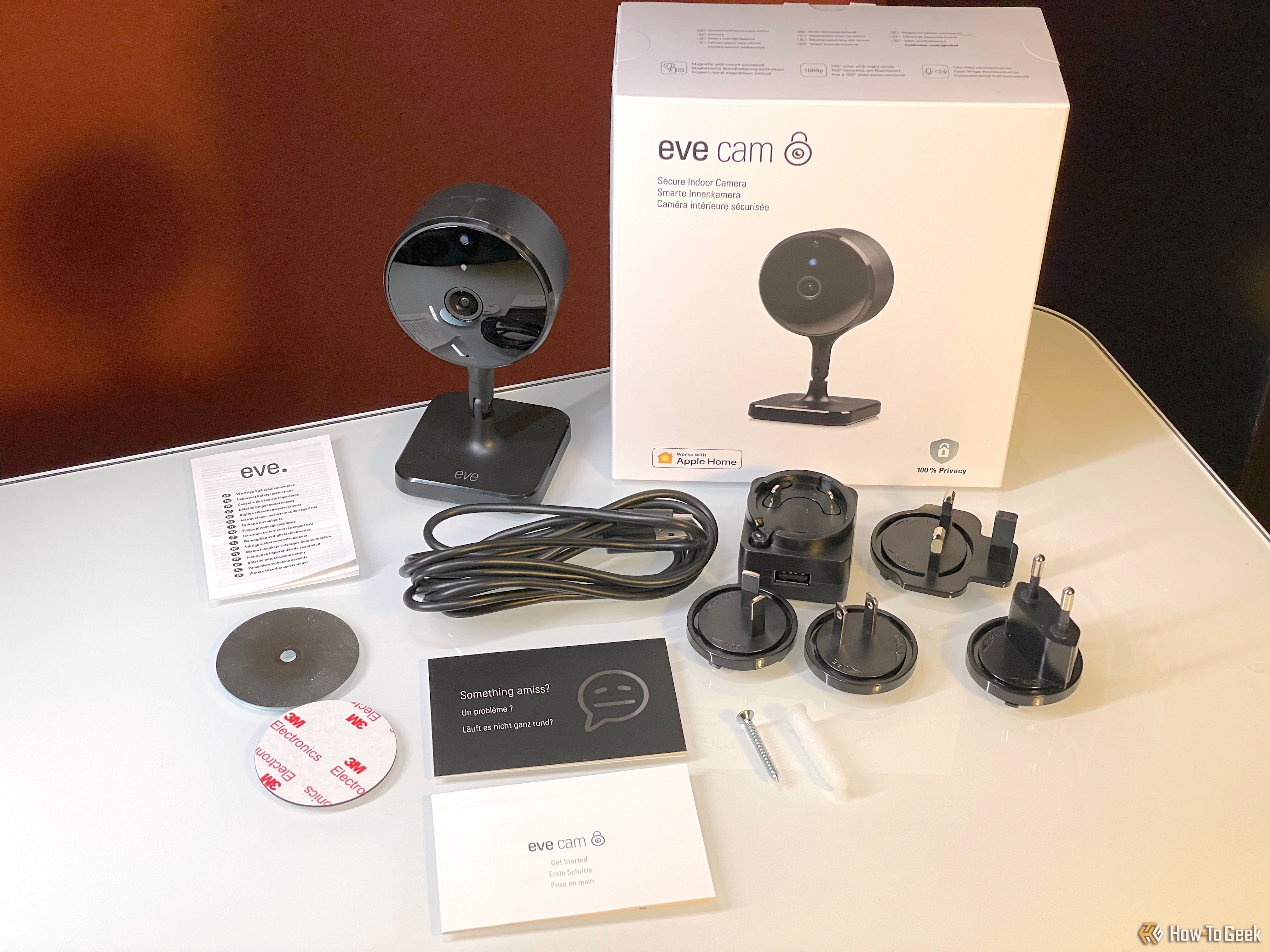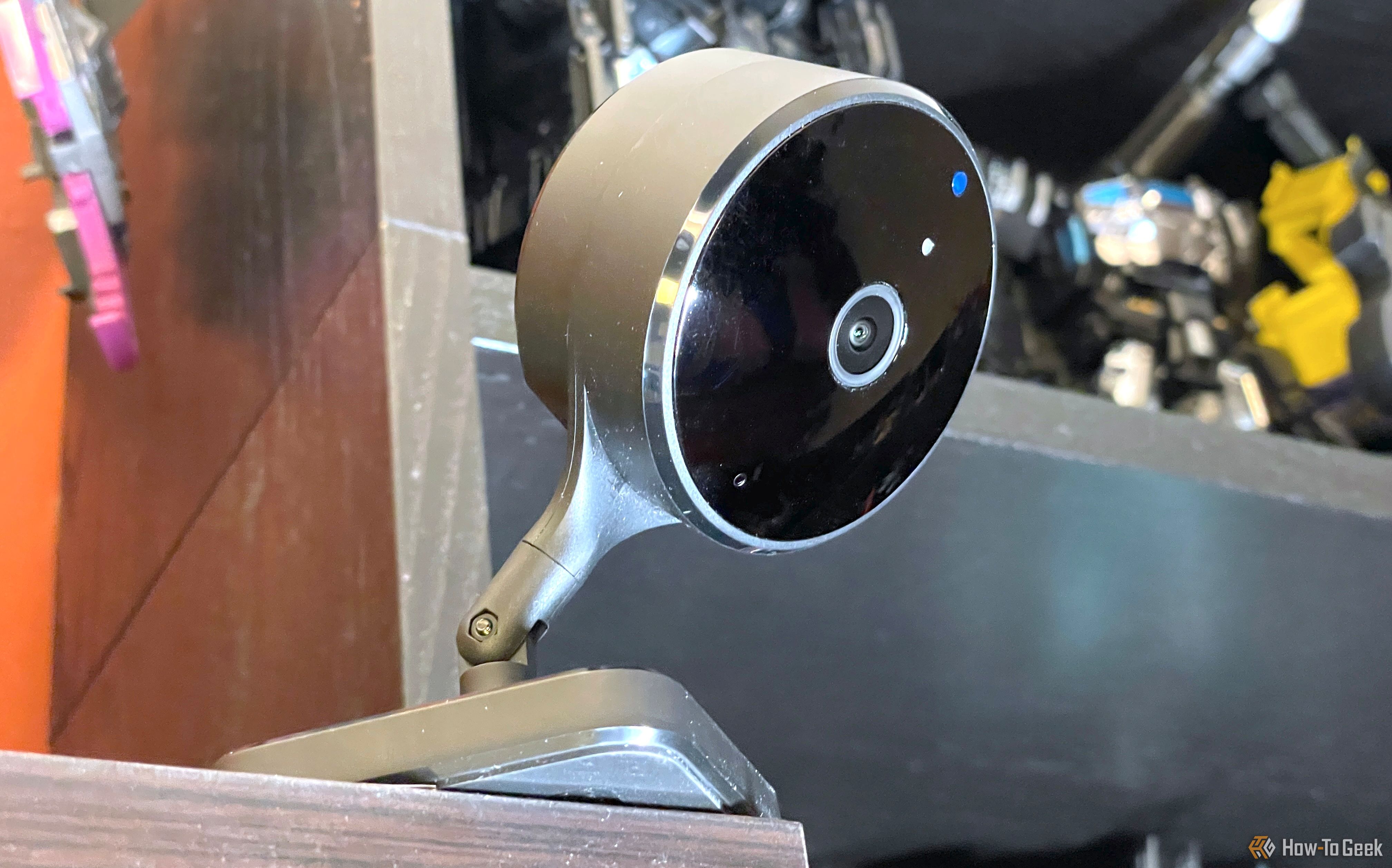Summary
- For $150, the Eve Cam Indoor Security Camera offers a sleek design, a fairly easy setup process, and breezy integration with Apple HomeKit.
- You’ll need a 50GB iCloud+ subscription and either an Apple TV or HomePod in order to set up a home hub and record video, set up notifications, set timers, create rules, and connect to multiple cameras.
- Video and sound quality are on par with the average home security camera, but comparable models offer an equally robust set of features at lower prices—sometimes much lower.
The Eve Cam Secure Indoor Camera promises privacy and security at a reasonable price, but most of its features require additional devices and paid services.
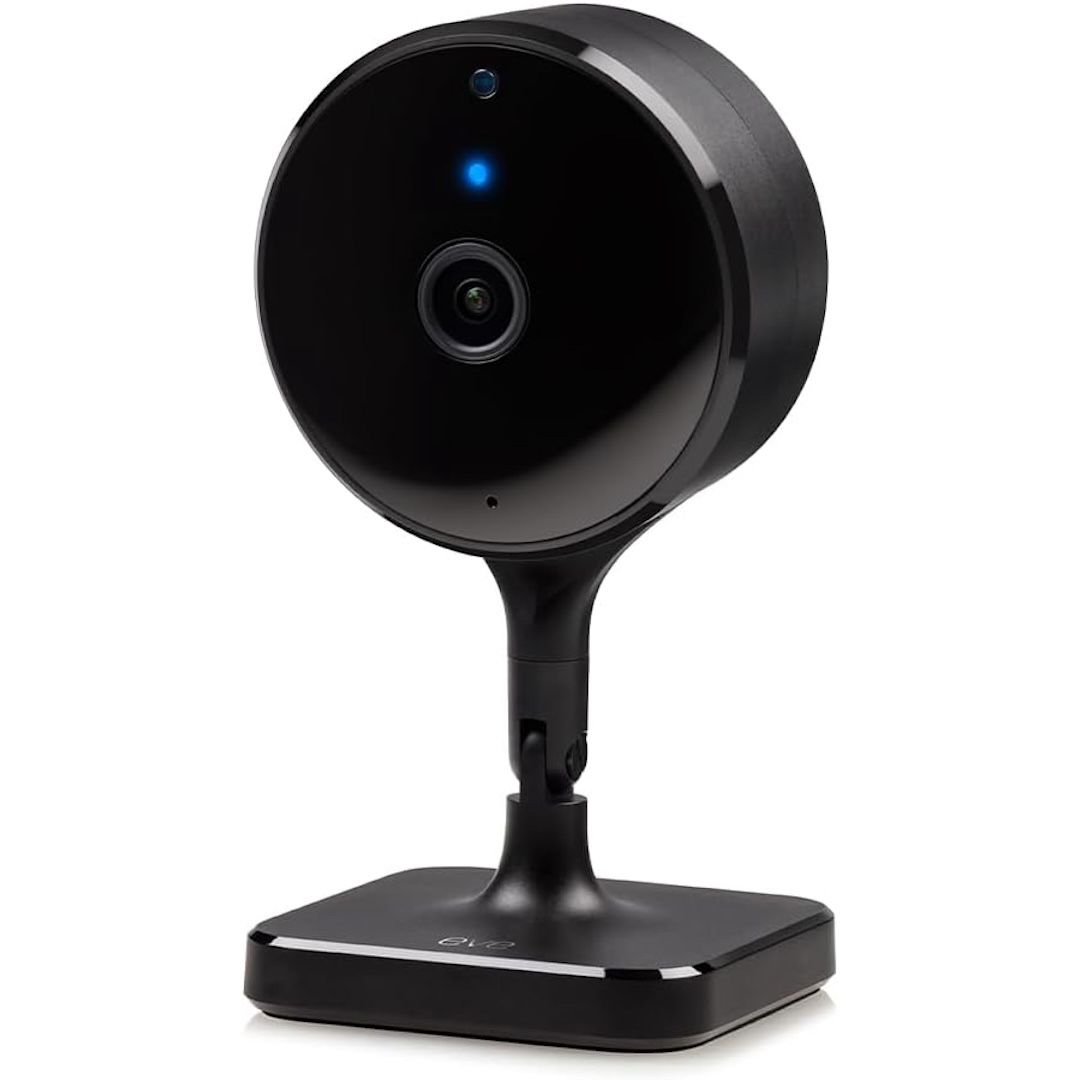
Eve Cam
The Eve Cam indoor security camera boasts a lot of features, but many of them require extra hardware and subscriptions to access.
- Fairly easy to set up and install
- Fairly flexible placement options
- Doesn?t require setting up any accounts to use
- Wind angle can cover most of a room easily
- Additional requirements and expenses for any features other than basic streaming
- Oddly inaccurate motion detection flags
- Doesn?t pick up mid-volume audio very well beyond 10-ish feet
- USB power requirement can limit location choices
Price and Availability
You can purchase an Eve Cam from Amazon, Apple, or directly from the Eve website itself for $150. The Eve online shop takes $20 off your total if you buy a two-pack – totaling $280 for the pair rather than $300.
Easy to Ignore (in a Good Way)
There’s no getting around how sleek the Eve Cam looks. It’s a nicely-contoured and shiny hockey puck of a thing that could feasibly blend in just about anywhere. At the very least, it doesn’t stand out.
The base and neck are also weirdly impressive with how effortless they make physical setup, positioning, and angling. Whether relying on the very grippy, almost rubbery, ring around the underside or the built-in —and quite strong—magnet, it doesn’t take much to find a stable vantage point.
Then you have a neck that tilts up to 90 degrees in either direction relative to the base, a head that can swivel a full 360, and enough friction in both joints to require very little physical effort to move, but they’ll still happily stay in place until you decide to adjust things.
Between the base and neck, and an included metal disc and screw in case you’d prefer to mount it on a wall, the Eve Cam can go just about anywhere. As long as it’s within range of a power outlet or a minimum of 5V USB-C power.
Thankfully, the included USB power cable—which also comes with multiple plug adapters for a variety of regions—is over 5-feet long, so it shouldn’t be too difficult to find a location with a good view and access to power, but this can limit your options in some areas.
Functional Caveats
As with most modern electronics that are intended to have some form of shelf presence in a brick-and-mortar store, the back of the Eve Cam box calls out a handful of features and functions to try and sway potential buyers.
End-to-end encryption for live video streams and recordings; up to 10 days of recording history; notifications for motion detection that can categorize people, animals, or vehicles; the option to turn the camera off when you’re home; and support for HomeKit Secure Video.
Requirements are also conveniently bullet-pointed back there and include the latest version of iOS or an up-to-date iPadOS, an available Wi-Fi network. A 50GB iCloud+ or higher storage plan, and either an Apple TV or HomePod to use as a home hub.
What’s not clear from this combination of lists is that, while a Wi-Fi connection and updated operating system are necessary to use the Eve Cam at all, both a home hub device and a 50GB iCloud+ subscription are required for the majority of its vaunted features.
Without an Apple TV ($130 to $150) or HomePod ($100 to $300) to set up as a home hub and a 50GB iCloud+ subscription ($1 per month), you won’t be able to record footage. Or set up notifications for motion sensing. Or set timers. Or manage rules. Or connect to more than one camera at a time.
That said, you can still stream video with motion detection flagging, utilize low-light settings, and make use of the Eve Cam’s built-in microphone and speaker to listen in or broadcast to the room that’s being watched.
The official Eve app falls a bit short as well, with a lot of options tucked away in unintuitive places, or popping up in several places.
For some reason, the motion detection is just… not good. It seemed fine upon initial setup, but after less than an hour it refused to acknowledge the absence of any movement—even when the room was completely still and the sensitivity was set as low as possible.
Turning it off and on again, disconnecting and re-pairing, and even a factory reset failed to fix the issue. So now this home security camera is flagging movement at all times, no matter the situation.
At least it’s a breeze to connect the feed to Apple’s official Home app. The motion detection problem persists, but it’s at least a bit easier on the eyes and smoother to navigate.
Looks Good, Sounds… Okay
For anyone who’s ever used—or at least seen—a modern home security camera in action, the Eve Cam is pretty much what you’d expect.
Video quality isn’t anything remotely close to 4K, but it does advertise 1080p and is clear enough to see what’s happening pretty clearly up to a distance of at least 15’ to 20’—after which less grandiose things like moving small items can be tough to make out completely.
30 frames per second is the maximum setting in the app, which is perfectly fine for a security camera like this, though the feed itself is admittedly a little choppy. Again, this is par for the course with a device like this. Just don’t expect buttery smooth HD video and it’ll be fine.
Sound is also a factor, thanks to the previously mentioned speaker and microphone. For its part, the speaker works well. The audio quality is a little tinny and distant, but it’s loud and clear enough to be understood by humans and pets alike. Also, this is a home security camera, not an entertainment system.
The microphone gets the job done as well, albeit not quite as effectively as the speaker. It does pick up sound, and it’s generally clear enough to be comprehensible—you can hold a conversation, for example—but distance can be a big factor.
In testing, loud and loud-ish noises (closing a door, dropping something, floorboards creaking, and so on) came through just fine from pretty much across the entire room. Less loud sounds, such as the ambient hiss of a radiator or the incessant scraping of an upstairs neighbor, did not.
This is all well and good, but noises that aren’t quiet or loud end up being fairly hit-or-miss. To go back to the conversation example, someone speaking at a regular indoor volume won’t be reliably picked up from roughly 10-feet away—often resulting in words cutting out.
Too Much for Too Little
Comparing the Eve Cam to its contemporaries initially seemed like a simple prospect: Just go down a list of features, regardless of requirements, and expect it to sit either in the middle or slightly towards the “this is better” end of things. And yet…
Price is always going to be at least a little subjective. Everyone has their own budget limitations and requirements, and what might be worth a little extra cash to some won’t be to others. Not so much for the Eve Cam.
At $150, which is on the higher end of most average home security camera prices, it’s not unreasonable to think the Eve Cam should eclipse cameras like the $130 Eufy Security Indoor Cam S350. And it should absolutely surpass a $50 TP-Link Tapo C120, right?
Well, to be perfectly honest, no.
At $20 less, Eufy’s S350 offers up to 4K video quality and up to 8 times zoom, very responsive motion detection, microSD card support for recording footage internally, and functional control over notifications. It just doesn’t work with Apple HomeKit.
It’s even worse when looking at the Tapo C120, because that camera’s a little over a third of the Eve Cam’s price but offers almost all the same functions. Plus microSD card support, and it can be used outside. Just no Apple HomeKit support.
Without the need to buy or already own anything other than a smartphone, either. The only features locked behind a subscription plan are 30 days’ worth of cloud-stored video history, tags and sorting for video clips, and snapshots to go with video alerts.
Should You Buy the Eve Cam?
Unless you’re dead set on getting a home security camera that’s compatible with Apple HomeKit, it’s difficult to recommend the Eve Cam Indoor Camera. Particularly for the price.
Not only do less expensive cameras offer most of the same functions—if not all, or possibly even more—but a good deal of what the Eve Cam does offer is effectively locked behind that HomeKit compatibility.
For a non-Apple product, this doesn’t make a whole lot of sense.

Eve Cam
The Eve Cam indoor security camera boasts a lot of features, but many of them require extra hardware and subscriptions to access.


